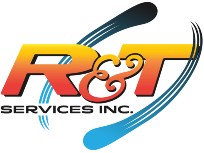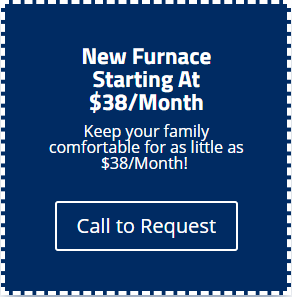Everything You Need To Know About Fireplace Inserts
There is nothing better than spending the long, cold Billings winters with your family, relaxed around your home’s fireplace. Memories are made drinking hot beverages, playing board games, and watching movies in the warm glow of your existing fireplace.
You already know that a traditional fireplace adds value, warmth, and ambiance to any room, but did you know that a fireplace can also increase the value of your home?
Your family deserves warmth and comfort all winter long. If you find your fireplace doesn’t heat your house as well as you’d like, or you are looking to update your existing fireplace’s look, there is an easy way to solve that problem without costly renovations for several benefits like:
- High-efficiency heat output
- Reduced heating costs
- A reduced carbon footprint
- Customizable, stylish design choices
- Many faceplate options
- Choice of heat source/fuel
- Lower repair costs
With so much to think about, do you ever wonder what you need to know before you add a fireplace insert to your existing fireplace? Unsure of whether to choose a catalytic or non-catalytic stove insert?
This buyer’s guide will answer all your questions about fireplace inserts. We hope this guide helps you see all the benefits and gives you everything you need to know about purchasing, installing, and enjoying a fireplace insert!
Improve Your Home
Improve your home’s temperature with a professionally installed fireplace insert!
What Is A Fireplace Insert?
A fireplace insert is exactly what it sounds like: a firebox directly inserted into your existing fireplace to increase heat output.
They are often placed inside older, existing masonry fireplaces because they offer high-efficiency heat, compared to a traditional fireplace, which loses as much as 90% of the heat produced through the flue while maintaining the beauty of your existing masonry fireplace.
Fireplace inserts equipped with a blower made to draw air in the room to heating chambers before blowing it back into the living space, which increases your other heating sources’ efficiency. These blowers use electric fans inside a vent that wraps around the outside of the firebox.
Fireplace inserts allow homeowners to easily update their existing fireplace to be more efficient and eye-catching. Homeowners can also choose from two popular fuel types of natural gas and wood fireplace inserts.
Fireplace Insert vs. Traditional Fireplace: What’s The Difference?
It’s essential to understand the difference between the terms “fireplace insert” and “fireplace.”
The term fireplace refers to an existing structure built directly into your home.
Fireplaces will typically burn wood as fuel and have large viewing areas and firebox measurements because they are built directly into your home or new construction and are not limited by existing fireplace dimensions.
However, they are a hassle to clean and require extensive upkeep to prevent fires.
Fireplace inserts are stoves, wood or gas, placed into an existing fireplace in your home.
Homeowners can often choose the style and fuel type when purchasing a fireplace insert. They are also easier to maintain.
Their measurements depend on what fireplace already exists in your living space, so they tend to have smaller viewing areas but higher energy efficiency.
Installing a fireplace insert into your existing firebox takes minimal time and is an inexpensive, noninvasive way to update your fireplace and living space aesthetic.
Sometimes preparing for a fireplace insert causes you to notice your current fireplace issues. Do you question if your existing fireplace needs to be replaced with a safer, custom-designed fireplace? R & T Services also specializes in custom fireplace design and installation. We offer lasting luxury traditional fireplaces.
Talk To Our Trained Professionals
Trust our trained professionals to ensure your fireplace insert delivers proper venting and best efficiency results!
How To Find The Perfect Fireplace Insert For Your Home
Now that you have decided that a fireplace insert is a way to update your existing fireplace, you will need to gather important information about your home and existing fireplace to narrow down the best fireplace insert option for your needs.
1. Sizing/Dimensions
Your new fireplace insert’s size and dimensions depend on the measurements of your existing fireplace.
To choose the best fireplace insert, you will need to secure the following measurements:
- Opening Height
- Opening Width
- Top-To-Bottom Opening Depth
- Read Width And Depth Of Area In Front Of Fireplace (Hearth)
Fireplace inserts come in many sizes, from small to very large, so the measurements you take will determine which model is the best choice. The square feet you need to heat also will impact your fireplace insert selection.
Consulting an expert is the best way to get accurate measurements and the best fit for your fireplace insert- even a small measurement error can result in your insert not fitting correctly!
Once you have the measurements, it’s on to the fun part! You’ll need to decide which fireplace insert best suits the aesthetic of your current fireplace and compliments your decor.
2. Look & Aesthetics
The style of a fireplace insert varies depending on fuel type. No matter which fuel type you choose, there are many colors, finishes, and design options to suit all tastes and styles.
From modern to traditional, cast iron to steel, most choices come with self-cleaning glass doors and your choice of log set styles to optimize appearance. Some fireplace inserts even come with remote control for easy use and thermostat adjustment.
If you are unsure of what look you are going for, try a quick internet search on sites like HGTV and Pinterest to get an idea of what aesthetic best fits your style.
3. Fireplace Insert Venting Options
Fireplace inserts are either vented through your working chimney, use a direct vent, or are vent-free, depending on your choice of fuel.
A wood-burning insert is vented through your existing chimney, while gas burning has more flexibility.
A chimney liner is required and can be installed by a professional in most situations. The size and type of liner depend on what your fuel preference is. Take a look at the differences between direct vent and vent-free options for your gas fireplace insert:
| Type Of Vent | Pros | Cons |
| Direct Vent |
|
|
| Vent-Free |
|
|
Do You Have A Masonry Or Zero-Clearance Fireplace?
You’ll want to determine whether your existing fireplace is masonry or zero-clearance to ensure you choose the correct fireplace insert.
Masonry fireplaces are usually made of brick or stone and have no metal within the opening. The firebox is made of the same material, which creates a barrier between construction materials and the fireplace.
They connect to a chimney that is typically made of brick and topped with a square flue tile or cap.
Zero-clearance fireplaces, on the other hand, are manufactured fireboxes that are fire rated so that no clearance is needed for safety. They may have metal louvers or grills on the top and bottom of the opening.
Zero-clearance fireplaces connect to an exterior chimney that is typically covered in siding to match the home and have a round metal chimney pipe or square metal cover on top.
No matter which category your existing fireplace falls into, R & T Services has a fireplace insert that will suit your needs!
You Could Be Losing Lots Of Money!
Air could be leaking through your fireplace and costing you hundreds of dollars each year!
Popular Types Of Fireplace Inserts To Consider
As we’ve mentioned earlier, fireplace inserts come in three fuel types: wood-burning, gas-burning, and the pellet stove.
While each of these models has its advantages and disadvantages, Billings residents will want to steer clear of fireplace inserts that burn pellets, as they aren’t ideal or efficient for Billings’ winters.
Sales figures indicate that gas-burning inserts are the most popular option. This is due to the rising cost and declining supply of wood for wood-burning inserts, and the decrease in the cost of natural gas, like propane.
Before you decide which popular type of fireplace insert is right for your needs, take a look at a breakdown of the two most common varieties.
1. Wood Burning Fireplace Inserts
Homeowners can’t deny the ambiance and authenticity of a wood-burning fireplace. The heat, the crackle, and the aesthetic are all that come to mind when you picture sipping tea and relaxing by a fireplace.
A wood-burning fireplace insert depends on real wood to produce heat. If you want the highest BTUs to heat for your home, have access to an abundant supply of certified wood, or often find yourself without power due to weather conditions, a wood fireplace insert is a right choice for you.
You can expect to choose between a steel or cast iron wood stove insert as far as finishes. Steel will give more of a traditional look, while cast iron appears more impressive and retains heat for a more extended period of time.
| Advantages Of A Wood Fireplace Insert | Disadvantages Of A Wood Fireplace Insert |
|
|
2. Gas Burning Fireplace Inserts
Gas-burning fireplace inserts offer the highest level of efficiency when it comes to heat output. There are the perfect choice for homeowners who want to press a button and instantly have a beautiful, warm living space.
Gas inserts heat your living space quickly and often can be programmed and controlled with remote control for convenience and ease of use.
Since they don’t require real wood, a gas fireplace insert comes with options like an artificial log set, choice of flame effects, ceramic glass chips, or stone to mimic a wood-burning fireplace. You can choose from firebrick inserts or metal when deciding on a finish.
| Advantages Of A Gas Fireplace Insert | Disadvantages Of A Gas Fireplace Insert |
|
|
3. Don’t Forget The Remote Control!
One perk of gas-burning fireplaces is that they come with handy remote controls to make adjusting heat and flame appearance hassle-free.
Be sure to check whether your gas-burning model includes a remote control or if you must purchase an additional one. It’s worth the investment when you are warm and cozy on the couch and need to adjust the thermostat!
Ready To Buy A Fireplace Insert For Your Billings Home?
R & T Services is ready to assist you in your fireplace insert purchase. Our expert technicians and staff offer the highest quality when it comes to products, installation, and service.
Our fair pricing, affordable financing options, and fast response time make us the best choice to help your purchase and install your new fireplace insert.
Contact us today for a free consultation!
Get The Fireplace Insert You Deserve!
Our team of trained professionals are ready to help you through the entire process to install the perfect fireplace insert for your home today!
Do all fireplace inserts come with a remote control?
While some fireplace inserts include a remote control with purchase, others require it to be bought separately.
Are fireplace inserts safe?
Yes! Because they prevent emissions from ever entering your home and carry a warranty, fireplace inserts are a solid, safe choice for your home.
Do fireplace inserts need a chimney liner?
Yes, to work properly, you will want to purchase the right chimney liner. Installing a fireplace insert without a chimney liner is considered unsafe.









tempora perspiciatis laboriosam earum consequatur voluptate sequi sint veniam totam alias. explicabo eveniet perspiciatis ut quibusdam quia magni voluptas consequatur vitae tenetur cum vel culpa. amet ea nihil adipisci qui sed consectetur.
harum nihil natus iusto autem aut possimus laborum praesentium ea aliquam rerum numquam atque corporis. dolores est perspiciatis voluptate qui iste tempora itaque voluptatem explicabo cumque. voluptatem non enim tempora quo autem ad soluta doloribus accusantium eligendi sed occaecati est et. qui distinctio eveniet id perspiciatis.
Good day! I could have sworn I’ve visited thos sitte
before but aafter going through a ffew of the
posts I realized it’s new to me. Regardless,
I’m definitely delighted I stumbled upon it and I’ll be book-marking it and checking back often! https://WWW.Waste-Ndc.pro/community/profile/tressa79906983/